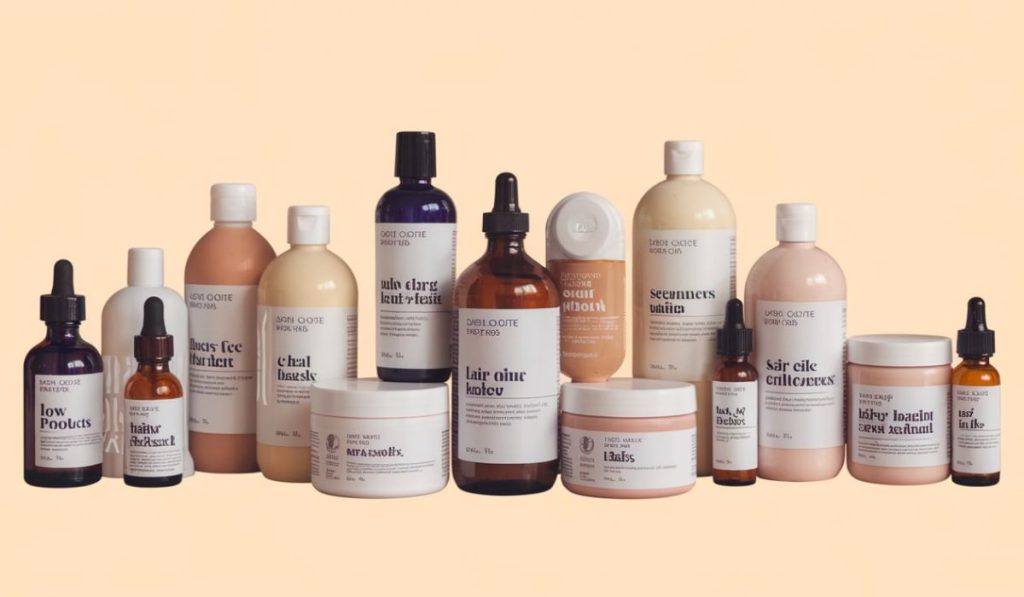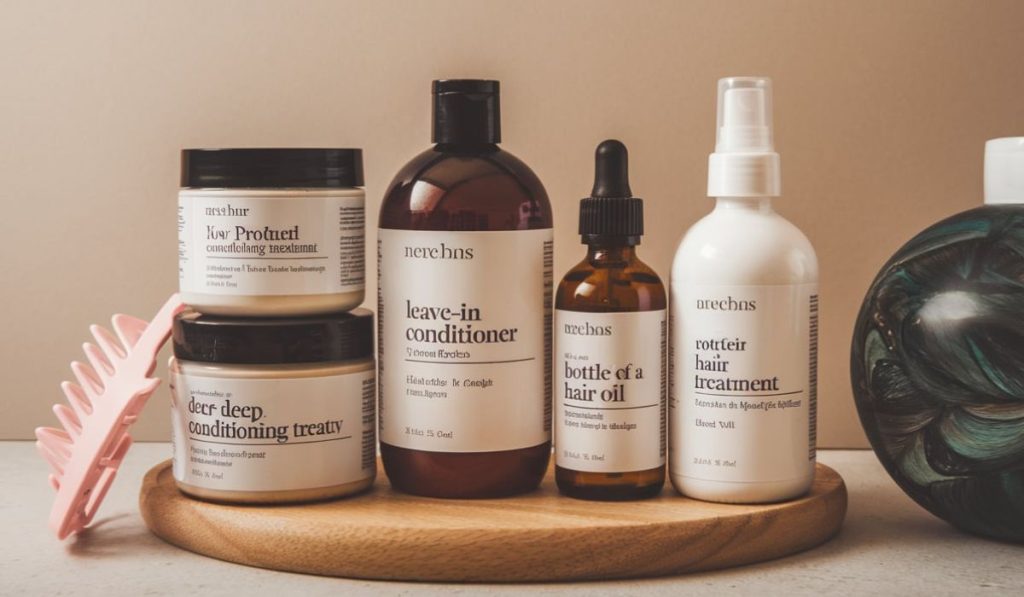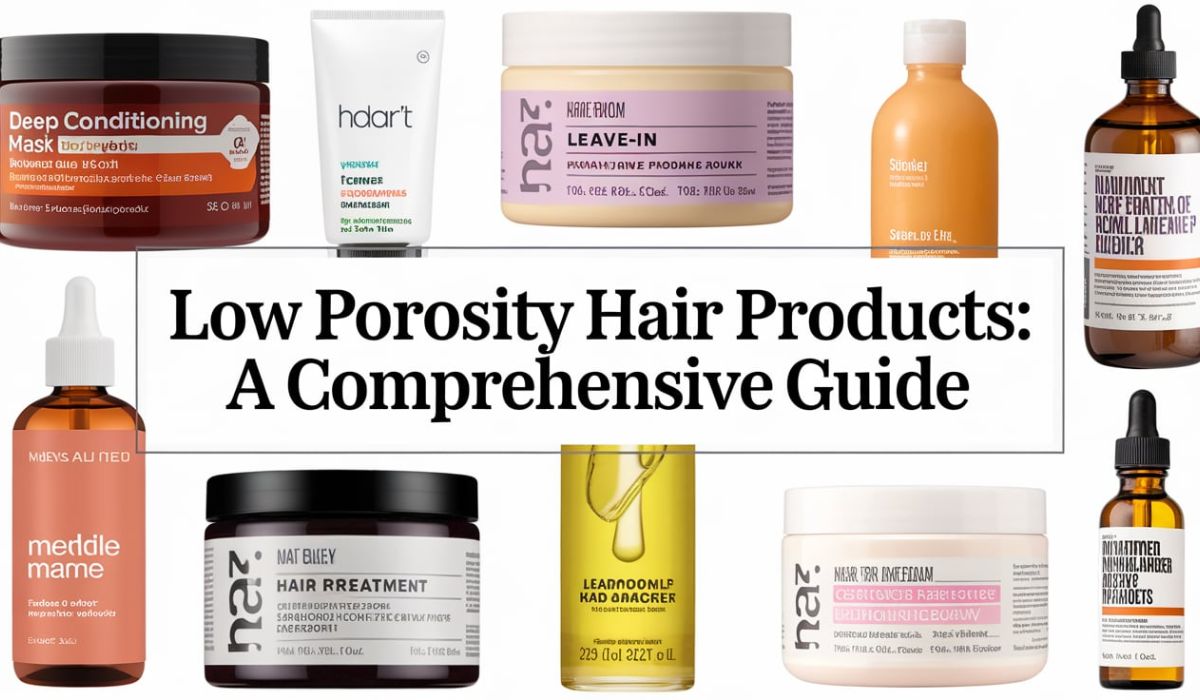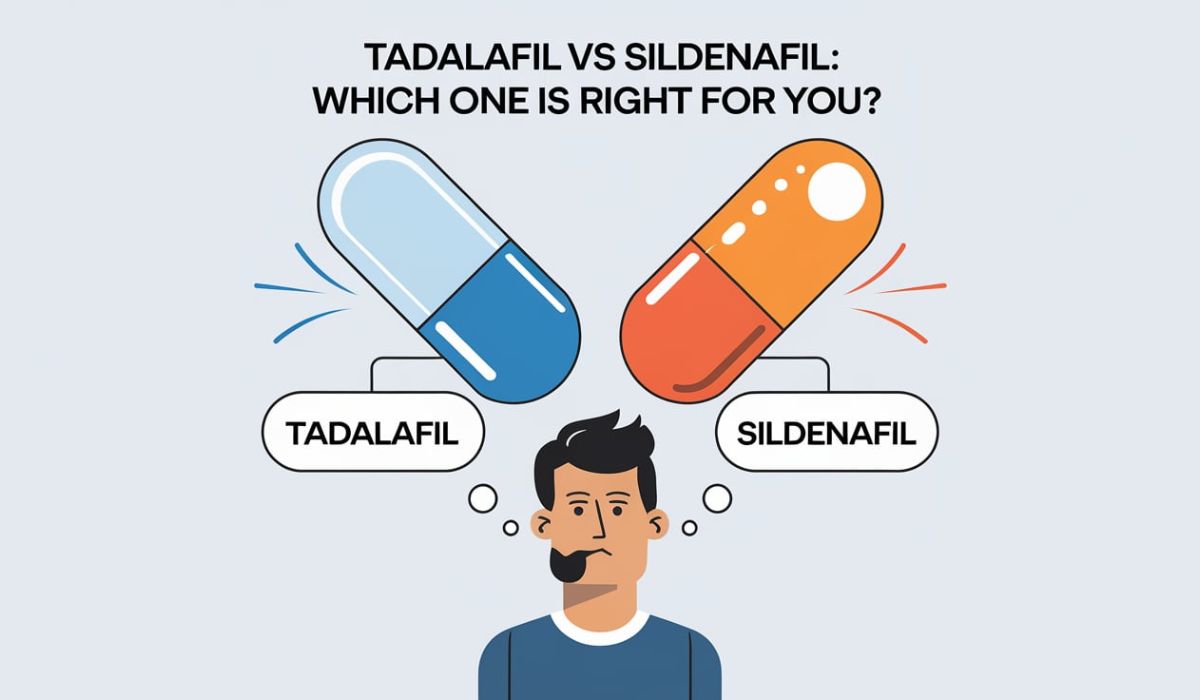Introduction
Does your hair seem to resist moisture no matter what products you use? If you’ve observed water droplets lingering on your hair or products not soaking in, you might be dealing with low porosity hair.
But don’t worry—understanding your hair type is the first step to achieving healthy, hydrated locks. This guide will explore the world of low porosity hair products, helping you find the best solutions for your hair care routine
Understanding Low Porosity Hair

Low porosity hair has cuticles that are tightly sealed, creating a natural barrier that makes it challenging for moisture to enter. Imagine it as a waterproof jacket—water slides off rather than being absorbed While this can make hydration a challenge, the right products can help overcome this.
Why Hair Porosity Matters
Why should you care about hair porosity? It’s simple: understanding your hair’s porosity helps you choose products that actually work. Using the wrong products can leave your hair feeling greasy, weighed down, or even more dry.
Common Signs of Low Porosity Hair
Not sure if you have low porosity hair? Here are some telltale signs:
- Water Beads on Hair: Your hair repels water instead of absorbing it.
- Slow Product Absorption: Products sit on your hair rather than sinking in.
- Build-Up Issues: Heavy products cause greasiness or residue.
If any of these sound familiar, your hair might have low porosity.
Ingredients to Look for in Hair Products

Choosing the right ingredients is essential. Look for:
- Humectants: Glycerin and honey draw moisture into the hair.
- Aloe Vera: Known for its lightweight hydration.
- Panthenol: Improves moisture retention and adds shine.
These ingredients ensure your hair stays hydrated without feeling heavy.
Ingredients to Avoid for Low Porosity Hair
Avoid products with:
- Thick oils and butters often remain on the surface of low porosity hair, leading to product buildup instead of proper absorption.
- Sulfates: Harsh cleansers that strip natural moisture.
- Silicones: Can create a barrier, preventing moisture absorption.
Understanding what to skip is just as important as knowing what to use.
Best Shampoos for Low Porosity Hair
An ideal shampoo for low porosity hair should effectively cleanse while preserving the hair’s natural moisture balance.. Here are top picks:
- Clarifying Shampoos: Use occasionally to remove build-up.
- Moisturizing Shampoos: Lightweight and hydrating formulas work best.
Top Conditioners for Moisture Retention
Conditioning is crucial for low porosity hair. Opt for:
- Lightweight Conditioners: Avoid heavy, creamy products.
- Hydrating Ingredients: Look for aloe vera and glycerin in the formula.
Leave-In Conditioners and Treatments

Leave-in conditioners are lifesavers for low porosity hair. They provide continuous hydration without weighing hair down. Apply these products in moderation, concentrating mainly on the ends of your hair.
Lightweight Oils for Low Porosity Hair
Heavy oils like coconut oil can coat low porosity hair, making it harder for the strands to absorb moisture effectively.. Instead, try:
- Argan Oil: Lightweight and nourishing.
- “Jojoba Oil: Emulates the scalp’s natural oils, providing seamless absorption and deep hydration.”
These oils add shine without build-up.
Protein-Free Products: Do You Need Them?
Low porosity hair tends to be protein-sensitive. Protein-free products can help avoid stiffness or dryness. Check labels carefully to ensure your products align with your needs.
Tips for Using Low Porosity Hair Products
Here are some tips to maximize the benefits of your products:
- Apply on Damp Hair: Helps products penetrate better.
- Use Heat: Steam or warm towels open cuticles for better absorption.
- Keep it simple: Using fewer products prevents overwhelming your hair.
DIY Remedies for Low Porosity Hair
If you love a DIY approach, try these remedies:
- Aloe Vera Spray: Mix aloe vera gel with water for a hydrating mist.
- Apple Cider Vinegar Rinse: Helps clarify and balance pH.
- Honey Mask: A natural humectant to lock in moisture.
Building a Hair Care Routine That Works
Consistency is key. Follow this basic routine:
- Cleanse: Use a clarifying shampoo as needed.
- Condition: Hydrate with lightweight conditioners.
- Seal: Use lightweight oils to lock in moisture.
- Refresh: Apply leave-in conditioner on non-wash days.
Myths About Low Porosity Hair Debunked
Let’s clear up some common misconceptions:
- The belief that low porosity hair doesn’t require moisture is a common myth—hydration is essential for keeping it healthy and vibrant.
- “Forget the myth that heavy products are more effective—lightweight options deliver superior results.
- “It feels unmanageable,” but with the right care, low porosity hair can flourish beautifully.
Conclusion: Embrace Your Hair Type
Low porosity hair isn’t a curse—it’s a unique characteristic that makes your hair special. With the right low porosity hair products and care routine, you can achieve healthy, beautiful locks that shine with confidence. “Celebrate your hair’s individuality and witness it flourish like never before!”
FAQs
1. How do I know if I have low porosity hair?
If water beads on your hair or products don’t absorb well, you likely have low porosity hair.
2. Are heavy oils good for low porosity hair?
No, lightweight oils like argan or jojoba oil are better suited.
3. Can I use protein treatments on low porosity hair?
Use protein treatments sparingly, as low porosity hair is often protein-sensitive.
4. How often should I clarify low porosity hair?
Clarify once a month or as needed to prevent build-up.
5. What’s the best way to moisturize low porosity hair?
Apply products on damp hair and use heat to open the cuticles for better absorption.
For More Visit, realmeet





